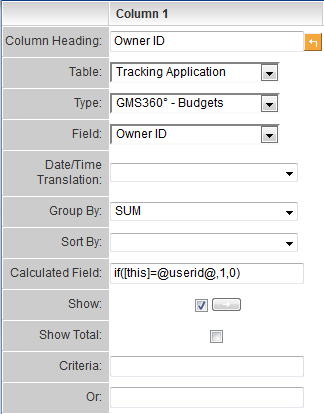Difference between revisions of "How do I do a count using a sum?"
From SmartWiki
| Line 9: | Line 9: | ||
==Examples== | ==Examples== | ||
| − | [[Image:ReportBuilderExample1.PNG|link=|300px]] This calculation will assign a value of "1" to each record where the @userid@ matches the Owner ID (in other words, all records where the user currently logged in is the Owner of the record), and a value of "0" to all other records, and then sum up the list. | + | ===Counting Records where Current User is the Owner=== |
| + | [[Image:ReportBuilderExample1.PNG|link=|300px]]<br> | ||
| + | This calculation will assign a value of "1" to each record where the @userid@ matches the Owner ID (in other words, all records where the user currently logged in is the Owner of the record), and a value of "0" to all other records, and then sum up the list. | ||
[[Category:FAQ]][[Category:Reports]] | [[Category:FAQ]][[Category:Reports]] | ||
Revision as of 10:09, 26 April 2013
Q: How do I do a count using a sum?
A: if([this]='Counting Criteria',1,0)
Why do we do this?
When using the Criteria line in the Report Builder, one line of criteria is treated as a single AND statement. By using this method we can move the criteria up to the Calculate Field area and allow for multiple OR criteria using a singular AND statement in the Criteria line.
Examples
Counting Records where Current User is the Owner
This calculation will assign a value of "1" to each record where the @userid@ matches the Owner ID (in other words, all records where the user currently logged in is the Owner of the record), and a value of "0" to all other records, and then sum up the list.
